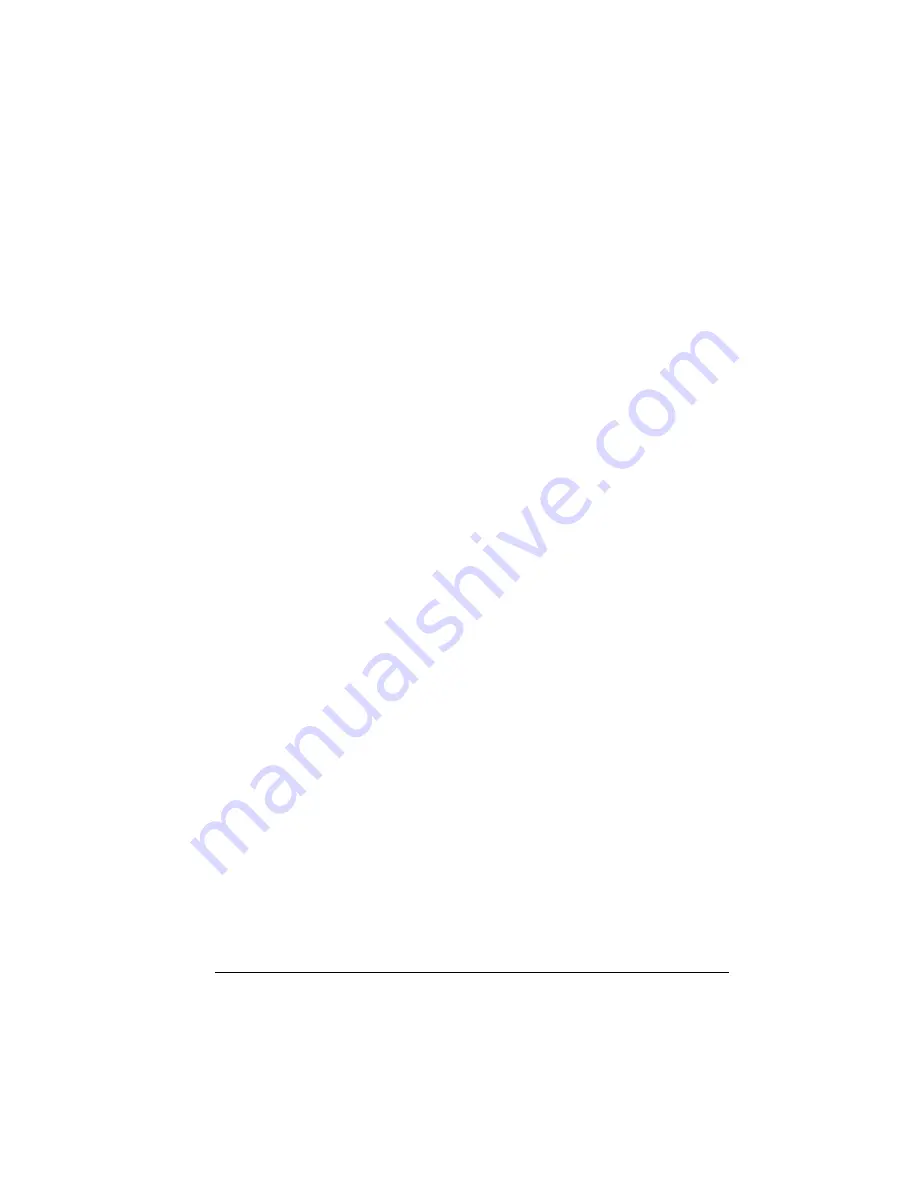
PCL 5
Emulation
Terminology
C-7
Document Option Commands
Fonts
Fonts are a unique set of objects that have an ID and attributes (sym-
bol set, spacing, pitch, height, style, weight, and typeface number).
You access a font by specifying a desired set of attributes. The sys-
tem selects the font that most closely matches these attributes from
the available set of fonts.
There are two types of fonts: bound and unbound. A bound font sup-
ports a single symbol set. An unbound font supports multiple, but not
all, symbol sets. With unbound fonts, the symbol sets are organized
into two groups: normal and Dingbats. All downloaded fonts are
bound, and all resident fonts (except Zapf-Dingbats which supports
the Dingbats symbol set) support the group of normal symbol sets.
In the PCL 5 emulation, only fonts located on the current resource
may be accessed by a PCL font ID using the normal <ESC>(#X com-
mand. All other fonts (resident, cartridge, or other), including those
stored on the additional resources can be accessed only by
attributes.
Also, only objects stored on the current resource may be deleted
directly by PCL. Thus, unless explicitly removed, external fonts are
always available to all PCL jobs.
Font Index Numbers
In addition to its ID, a downloaded font also has a unique index num-
ber which is automatically assigned by the printer when the font is
downloaded. This index number may change if new resources are
added, but in practice it usually remains fixed. All currently available
PCL fonts (resident, cartridge, temporary, permanent, and external)
are listed with their font index numbers on the advanced status page.
The font index number option on the Administration/Emulations/
PCL5/Default font menu defines the
default
PCL font for a job (If
Select by Index is specified as the default PCL font).
»
Note:
This is true for fonts on any resource.
Summary of Contents for 1060
Page 1: ...QMS 1060 Print System Reference 1800338 001B...
Page 13: ...1 Introduction In This Chapter n About this manual n Typographic conventions...
Page 17: ...2 Print Media In This Chapter n Media sizes imageable areas and margins n Media storage...
Page 34: ......
Page 130: ......
Page 229: ...A QMS Customer Support In This Chapter n Sources of customer support n QMS world wide offices...
Page 252: ......
Page 274: ......
Page 279: ...E Configuration Menu In This Chapter n Configuration menu charts...
Page 284: ......
















































